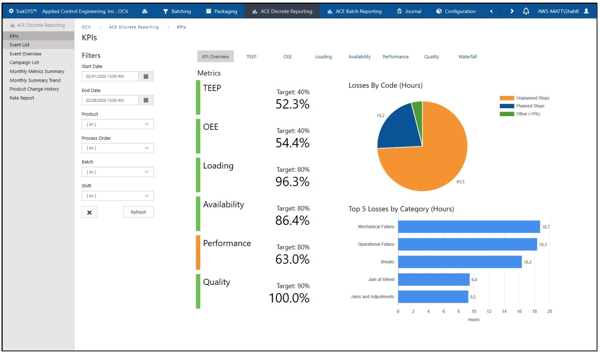When a multi-billion-dollar company has manufacturing operations spread throughout more than 120 facilities around the world and is producing a wide variety of products, it can be difficult to ensure every facility is operating near peak performance. This is exactly the position one global manufacturer recently found themselves in after undergoing several mergers.
To improve their overall manufacturing processes, this organization’s management team set out to formulate a plan that targeted several aspects in which data is managed and consumed. First, they wanted to develop a standard method for viewing performance metrics across all factories, including those that were recently acquired. Second, they wanted to identify potential bottlenecks at each facility that were preventing them from getting as much out of their manufacturing infrastructure as they should and improve on those issues. Third, they wanted to remove the disconnect that existed between their operations and supply chain by improving the availability of real-time production data.
The Solution: Implementing MES to Measure Overall Equipment Effectiveness
Once this company realized there was likely room to improve their operating efficiency, their management spent nearly two years evaluating different manufacturing execution system (MES) solutions and software. Since improving productivity was their main goal, the organization’s leadership agreed that the new solution needed to be able to analyze overall equipment effectiveness (OEE) across all their manufacturing facilities. They selected Parsec’s TrakSYS software as their OEE tool because of its extensive capabilities as an MES for discrete systems, packaging lines, continuous processes, and batch applications.
During their research for qualified integrators, the company learned more about MES solutions ACE developed for other companies. They liked how ACE takes an agile development approach, which allows them to be flexible and adapt to unanticipated project changes. Thus, they selected ACE as an implementation partner for more than half of their MES projects.
Once the integrators were selected, the company worked with them to develop a standard set of components, key performance indicators (KPIs), and reports to view their operations consistently across their organization (Figure 1). With this new view, the company could set priorities and make better decisions regarding process and production changes that would provide the best return.

Figure 1. An example of a KPI overview screen that allows operators and management to easily see a snapshot of system performance.
They also gave their integrators the flexibility to implement custom reports and solutions to address specific bottlenecks identified at the plant level as needed. While rolling out this OEE solution at the first half of their manufacturing facilities, some of the custom solutions ACE developed included batch worksheets, electronic journaling, and automation of tasks such as data entry, data analysis, and workflow management.
Read more about this organization’s MES implementation and some of the custom solutions ACE implemented at its facilities by reading the full case study.



